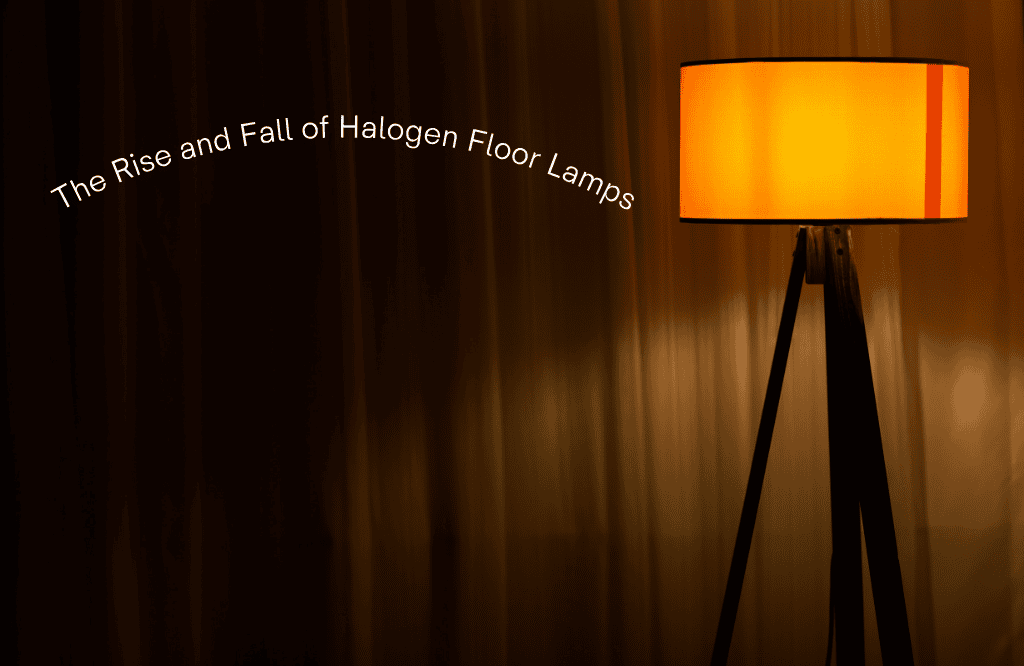Indoor Lights

The Rise and Fall of Halogen Floor Lamps — What Killed the Glow
Do you remember the warm, golden beam of a halogen floor lamp — that tall, elegant torchiere glowing like a miniature sun in the corner of a living room? For many of us, halogen lamps were light itself: bright, instant, flattering. Yet, if you’ve tried to buy one recently, you may have discovered they’re vanishing from stores, quietly replaced by cooler, more efficient LEDs.
So, what happened? Why did halogen floor lamps, once the darlings of design and brightness, fall out of favor — and eventually, off the shelves? Let’s unpack the story, layer by layer — of technology, regulation, and a little bit of nostalgia.
The Bright Beginning — What Made Halogen Lamps So Special
Halogen lamps are a refined branch of the incandescent family — think of them as the “sportscar version” of the classic bulb. Instead of a plain tungsten filament in a vacuum, halogen lamps encase that filament in a tiny quartz capsule filled with halogen gas (usually iodine or bromine). The result? A brighter, whiter, more efficient light — and a filament that lasts longer, thanks to a clever chemical cycle that redeposits evaporated tungsten.
When the halogen torchiere floor lamp arrived in the U.S. market around 1983, it felt like the future. By the mid-1990s, it exploded in popularity — fueled by minimalist design trends, college-dorm affordability (prices as low as $15–30), and the allure of modern lighting that could make any small apartment glow like a gallery. They became a cultural moment — a fixture in every dorm, studio, and first apartment. For a generation, that was modern light.
The Heat Beneath the Beauty — The Drawbacks Emerge
But beauty has a cost. Halogen lamps, for all their brilliance, burn hot — extremely hot. A 300-watt halogen bulb can reach over 500°C (970°F), while 500-watt models can exceed 650°C (1,200°F).
Throughout the 1990s, reports began to surface: drapes catching fire, lamps toppling over, even tragic deaths. By 1997, the U.S. Consumer Product Safety Commission (CPSC) had linked over 180 fires and 10+ fatalities to halogen torchieres. The solution: mandatory glass or wire guards and stricter heat standards. It helped — but trust was already singed.
Energy, Efficiency, and the Global Shift in Standards
Even if halogen had survived its safety scandal, another storm was brewing: energy efficiency. Compared to the old incandescent bulb’s 12–15 lumens per watt, halogens offered around 16–25 lumens per watt — about 1.3 to 1.7 times more efficient. But LEDs? They deliver 80–150 lumens per watt — a 4–10× leap in efficiency.
Regulators took notice. In the EU, most halogen bulbs were banned by 2018. In the U.S., since August 1, 2023, bulbs must deliver at least 45 lumens per watt — a threshold halogens rarely reach. Similar standards emerged worldwide. Halogen wasn’t just losing market share; it was being written out of the regulatory script.
The Market Turns Cold — Why You Can Barely Find Them Now
Once efficiency rules tightened, manufacturers pivoted. Retailers stopped restocking. Suppliers discontinued parts. Today, only R7s linear tubes and G9 capsules remain under narrow exemptions for “specialty lighting,” such as studio and stage applications.
For the everyday home torchiere, though, the verdict is final — it’s gone. LEDs now dominate with 25× longer lifespans, 80–90% lower power use, and no heat hazards. Halogen didn’t just lose; it was out-evolved.
Lessons from the Fall — What the Halogen Era Taught Us
Brightness alone isn’t enough. Efficiency, safety, and sustainability matter too.
There’s something almost poetic about the fall of halogen lighting. It was brilliant, but wasteful. Elegant, yet dangerous. A perfect metaphor for technology that shines brightly but burns out too soon.
Technically, halogen lamps emit around 3000 K color temperature with a perfect 100 CRI — meaning flawless color rendering, just like natural sunlight. And as they dim, they warm naturally, shifting toward amber — that soft, cinematic “dimmed halogen glow” designers and photographers still chase. LEDs can mimic it, yes. But they rarely feel the same.
For Those Who Still Own One…
- Keep flammable materials at least 2 ft (60 cm) away.
- Use only the recommended wattage.
- Ensure it has a protective grill or cover glass.
- Consider LED retrofit bulbs — they exist, and some are surprisingly good.
If you eventually retire it, do so with respect. That lamp served faithfully — through reading nights, gatherings, and quiet moments.

DeckTok RGBWW Smart Corner Floor Lamp
Bring your room to life with rich RGBWW lighting that blends brilliant colors and warm whites. Controlled by app or voice, the corner lamp easily shifts brightness and effects to match movie nights, gaming sessions, or everyday relaxation.
Learn MoreConclusion
The disappearance of halogen floor lamps isn’t just about bans or brightness — it’s about evolution. It’s the story of how our relationship with light changed — from warmth and wattage to efficiency and intelligence.
The halogen lamp burned brightly, briefly, beautifully. Now, LEDs carry the flame — cooler, cleaner, longer-lasting. Maybe progress always works like this: something brilliant lights the way, then fades — leaving behind lessons that illuminate the next generation.
FAQs
Can I still buy halogen floor lamps?
Only leftover stock. New halogen lamps and most bulbs are banned in the U.S. and EU for poor energy efficiency, though some specialty types like R7s and G9 remain legal.
Why do halogen lamps look warmer than LEDs?
Halogens run at about 3000 K with a perfect 100 CRI, and they glow warmer as they dim — something LEDs only imitate, not truly reproduce.
Are old halogen lamps safe to keep using?
Yes, if used carefully. Keep flammables at least two feet away, never cover the top, and ensure there’s a guard or glass over the bulb.

